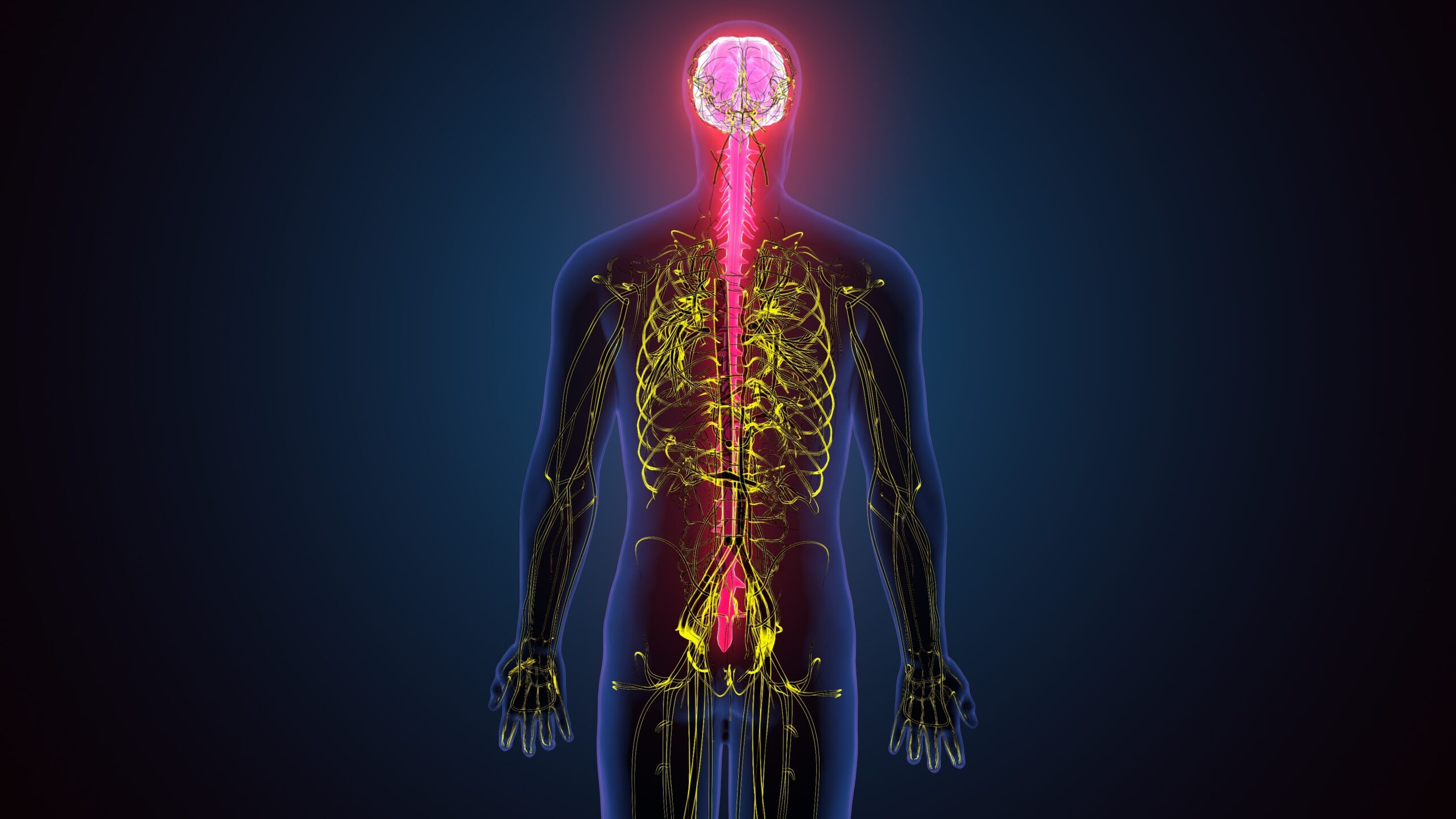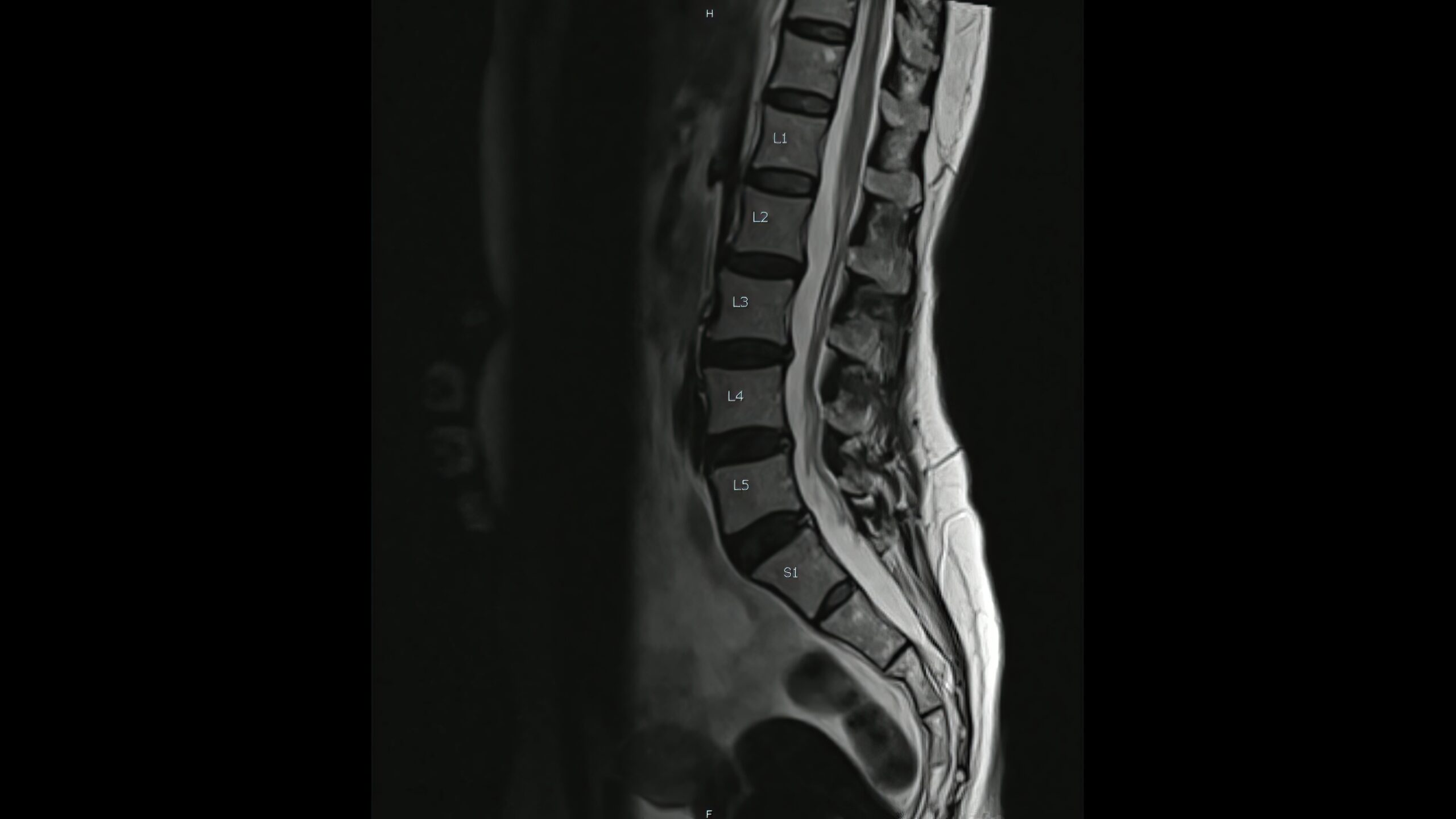Spinal Cord Disorders
Traumatic injury, compressive and non-compressive myelopathies, and hereditary spastic paraplegia can affect movement, sensation and bladder/bowel control. Early recognition and a clear plan are key to preserving function.

Traumatic injury
What it is: Sudden damage to the spinal cord after an accident or fall, causing weakness or paralysis and loss of sensation below the level of injury, sometimes with breathing or bladder/bowel problems.
Immediate action: This is an emergency. Call 999, keep the spine immobilised and follow paramedic advice.
Ongoing care: Hospital treatment, prevention of complications (pressure sores, clots), and structured neuro-rehabilitation.
Longer-term support may include spasticity management, mobility aids, bladder/bowel programmes and psychological support.

Compressive myelopathies
What it is: Pressure on the cord from disc prolapse, cervical/lumbar stenosis, tumour, haematoma or epidural abscess.
Symptoms: Neck or back pain with bilateral arm/leg numbness or weakness, hand clumsiness, unsteady or stiff (“spastic”) gait, electric-shock sensations on neck flexion (Lhermitte’s), and bladder/bowel or sexual dysfunction.
Assessment: Urgent MRI to confirm compression and identify the cause; blood tests; early antibiotics if abscess is suspected.
Treatment: Timely decompression (neurosurgery/orthopaedics) when indicated; steroids are often used in malignant cord compression; antibiotics for abscess; individualised rehab and fall-prevention afterwards.
Non-compressive myelopathies
What it is: Cord dysfunction without mechanical pressure, due to:
-
Inflammation (transverse myelitis, MS, NMOSD, MOGAD)
-
Vascular causes (spinal cord infarct, dural AV fistula)
-
Metabolic/deficiency (notably vitamin B12 or copper)
-
Radiation, infections or autoimmune conditions
Symptoms: Subacute sensory change, band-like tightness across the torso, leg weakness/spasticity and gait imbalance; pain or bladder symptoms may occur.
Assessment: MRI with contrast, CSF (including antibodies), targeted bloods (B12, copper, autoimmune/infectious screens) and, where helpful, evoked potentials.
Treatment: Cause-directed—high-dose steroids (± plasma exchange/IVIg) for inflammatory forms; revascularisation for AV fistula; B12 replacement for deficiency; focused rehabilitation.
Hereditary spastic paraplegia (HSP)
What it is: Genetic disorders causing gradually progressive leg stiffness and weakness from corticospinal tract degeneration. “Pure” HSP affects mainly gait; “complex” forms may add neuropathy, ataxia or cognitive features.
Assessment: Clinical pattern, MRI to exclude compression, and genetic testing with counselling; EMG/NCS to assess for co-existing neuropathy.
Management: Physiotherapy (stretching, strengthening, gait/balance), spasticity treatment (e.g., baclofen/tizanidine, botulinum toxin, or intrathecal baclofen in selected cases), orthotics, mobility aids and bladder management. Family advice and future planning are integral.
How Dr Francesco Manfredonia can help
-
Rapid triage & diagnosis: distinguishing cord compression from inflammatory or metabolic causes with targeted examination and MRI/CSF/neurophysiology.
-
Co-ordinated pathways: swift referral to neurosurgery for compression; evidence-based immunotherapy for inflammatory myelitis; rehabilitation and spasticity clinics.
-
Personalised plans: clear written guidance on mobility, falls prevention, bladder/bowel care, work/driving and follow-up.
Emergency: New bilateral leg weakness, numbness around the saddle area, or urinary retention/incontinence with back pain may indicate acute cord compression—call 999.
FAQ
What’s the difference between myelopathy and radiculopathy?
Myelopathy is spinal cord dysfunction (often bilateral with gait and bladder involvement). Radiculopathy is nerve-root irritation, usually causing pain/tingling and weakness in a single limb pattern.
Do I always need an MRI for suspected myelopathy?
Yes—MRI is the key test to confirm cord involvement and decide on urgent treatment.
Can the spinal cord recover?
Recovery varies by cause and speed of treatment. Inflammatory and deficiency-related myelopathies can improve substantially; compression treated promptly has better outcomes; traumatic injury often needs prolonged rehab to maximise function.
Are steroids used for spinal cord problems?
They’re commonly used in inflammatory myelitis and malignant cord compression. Routine high-dose steroids for traumatic cord injury are not standard practice.
What is Lhermitte’s sign?
A brief electric-shock sensation down the spine/limbs on neck flexion—seen in cervical cord disorders (compression or inflammation).
Can I have an MRI if I have metalwork or a pacemaker?
Many devices are MR-conditional; bring your device card. We’ll liaise with radiology to scan safely or choose alternatives.
Will I need surgery for cervical spondylotic myelopathy?
Often yes when there’s significant impairment or progression; decisions weigh symptoms, imaging and overall health.
What helps day to day?
Regular, graded physiotherapy, spasticity management, good skin and foot care, bowel/bladder programmes, safe home layout and pacing strategies.
When can I drive or return to work?
This is individual and depends on strength, sensation and reaction times. You’ll receive tailored advice in line with current guidance.
BOOK YOUR CONSULTATION
Book a consultation with Dr Francesco Manfredonia (Dr FM) for clear diagnosis, compassionate care and a plan built around your life and goals.
